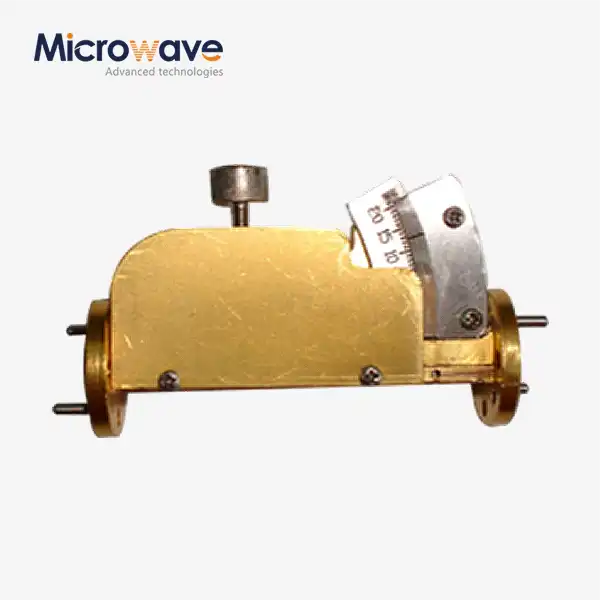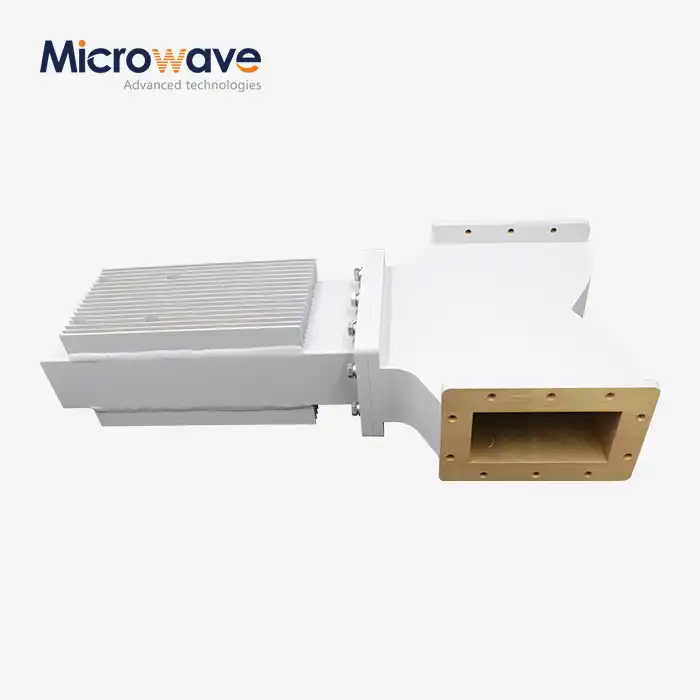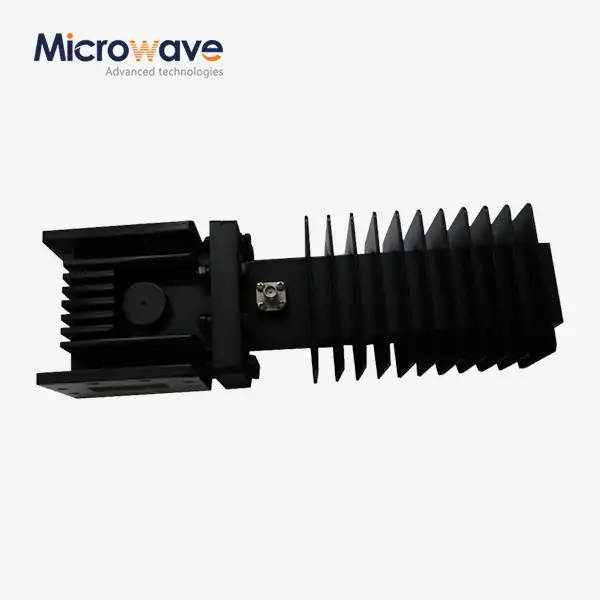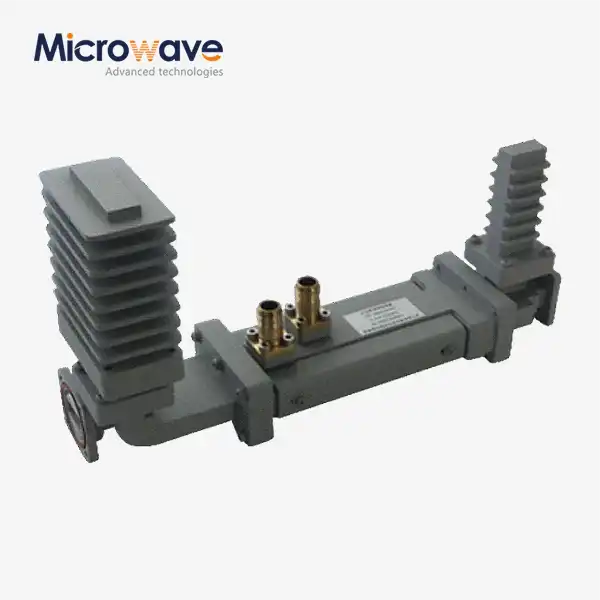What Role Do Waveguide Low Pass Filters Play in Reducing Interference in Telecommunications?
In today's interconnected world, telecommunications systems face unprecedented challenges in maintaining signal integrity while operating across increasingly crowded frequency spectrums. As communication networks expand and evolve to support everything from 5G mobile networks to satellite communications, the need for sophisticated filtering solutions has become critical. Waveguide Low Pass Filters emerge as essential components in this technological landscape, serving as guardians of signal quality by selectively allowing desired frequencies to pass while effectively blocking unwanted high-frequency interference. These precision-engineered devices play a pivotal role in ensuring reliable communication by preventing signal degradation, reducing cross-talk between channels, and maintaining the overall performance of complex telecommunications infrastructure.
Understanding the Fundamental Mechanics of Waveguide Low Pass Filters in Telecommunications
Physical Design and Operating Principles
Waveguide Low Pass Filters operate on sophisticated electromagnetic principles that make them indispensable in modern telecommunications systems. These devices utilize carefully engineered metallic structures that create specific electromagnetic field patterns, allowing signals below a predetermined cutoff frequency to propagate freely while attenuating higher frequencies. The physical construction typically involves precision-machined waveguide sections with internal obstacles or discontinuities that create reactive elements, effectively forming a distributed filter network. Advanced Microwave Technologies Co., Ltd manufactures these filters using high-grade aluminum or copper materials, ensuring optimal conductivity and minimal signal loss. The geometric parameters, including the waveguide dimensions, obstacle spacing, and internal configurations, are meticulously calculated to achieve specific filtering characteristics. For instance, the ADM-40WLPF model operates in the C-band with a passband of 4.5-4.8 GHz, demonstrating how precise engineering translates into targeted frequency selectivity. The filter's ability to maintain a VSWR of ≤1.2 while providing isolation of ≥55 dB showcases the sophisticated balance between signal transmission and interference rejection that makes Waveguide Low Pass Filters essential in telecommunications applications.
Frequency Selectivity and Signal Integrity
The frequency selectivity characteristics of Waveguide Low Pass Filters directly impact telecommunications system performance by ensuring that only desired signal components reach sensitive receiving equipment. These filters create sharp frequency roll-off characteristics that effectively separate wanted signals from unwanted harmonics, spurious emissions, and out-of-band interference. The transition between the passband and stopband regions is engineered to provide maximum attenuation of interfering signals while preserving the integrity of the desired communication channels. Advanced Microwave's ADM-120WLPF Ku-band filter exemplifies this precision with its passband of 11.6-12.8 GHz and stopband of 13.5-15 GHz, providing 60 dB of isolation while maintaining insertion loss below 0.25 dB. This level of performance ensures that satellite communication systems can operate with minimal noise contamination and maximum signal clarity. The filter's ability to handle high-frequency operations up to 110 GHz makes it suitable for next-generation communication systems, including emerging 6G technologies. The precise frequency control offered by Waveguide Low Pass Filters enables telecommunications engineers to optimize spectrum utilization, reduce interference between adjacent channels, and ensure compliance with regulatory emission standards.
Material Properties and Environmental Considerations
The material selection and construction quality of Waveguide Low Pass Filters significantly influence their performance in telecommunications applications, particularly in challenging environmental conditions. High-grade materials such as copper and aluminum provide excellent electrical conductivity while offering superior thermal stability and corrosion resistance. Advanced Microwave Technologies employs specialized surface treatments, including chromate conversion and silver plating, to enhance the longevity and performance consistency of their Waveguide Low Pass Filters. These treatments not only improve electrical properties but also provide protection against oxidation and environmental degradation, ensuring reliable operation in outdoor telecommunications installations. The robust construction enables these filters to withstand temperature variations, humidity fluctuations, and mechanical stresses commonly encountered in field deployments. The company's adherence to RoHS compliance demonstrates their commitment to environmental sustainability while maintaining superior technical performance. This environmental consciousness, combined with ISO 14001:2015 certification, ensures that telecommunications operators can deploy these filters with confidence in their long-term reliability and minimal environmental impact. The durability characteristics make these filters particularly suitable for satellite ground stations, cellular tower installations, and other critical telecommunications infrastructure where maintenance access may be limited.
Critical Applications and Performance Enhancement in Modern Communication Systems
Satellite Communication Systems and Space Applications
Waveguide Low Pass Filters play a crucial role in satellite communication systems by ensuring signal purity and preventing interference in the challenging space environment. These filters are essential components in both ground-based satellite terminals and space-borne communication payloads, where they must operate reliably under extreme conditions including temperature variations, radiation exposure, and mechanical stress. The precision filtering capabilities of Advanced Microwave's Waveguide Low Pass Filters enable satellite operators to maximize spectrum efficiency while maintaining strict emission compliance requirements. In satellite uplink applications, these filters prevent harmonics and spurious emissions from interfering with adjacent frequency bands, ensuring that multiple satellite operators can coexist within the same orbital positions without mutual interference. The ADM-220WLPF Ka-band filter, with its 20.4-20.9 GHz passband and 30-31 GHz stopband, exemplifies the precise frequency control required for modern high-throughput satellite systems. The filter's low insertion loss of ≤0.3 dB ensures maximum power efficiency, critical for satellite applications where power consumption directly impacts mission duration and operational costs. The ability to customize these filters for specific satellite mission requirements allows operators to optimize their communication systems for maximum data throughput while minimizing interference potential.
Cellular Network Infrastructure and 5G Implementation
The deployment of 5G cellular networks has created unprecedented demands for sophisticated filtering solutions, making Waveguide Low Pass Filters indispensable components in modern cellular infrastructure. These filters enable cellular operators to manage complex spectrum allocations while preventing interference between different frequency bands and communication technologies. In cellular base stations, Waveguide Low Pass Filters ensure that transmitted signals remain within allocated frequency bands while suppressing harmonics and spurious emissions that could interfere with adjacent services. The filters' ability to handle high power levels while maintaining excellent linearity makes them ideal for cellular applications where signal quality directly impacts user experience and network capacity. Advanced Microwave's customization capabilities allow cellular equipment manufacturers to optimize filter performance for specific frequency bands and power requirements, ensuring optimal network performance. The filters' low maintenance requirements and robust construction reduce operational costs for cellular operators while ensuring reliable service delivery. The integration of these filters in distributed antenna systems and small cell deployments enables operators to extend network coverage while maintaining signal quality in challenging RF environments.
Radar Systems and Defense Applications
Military and civilian radar systems rely heavily on Waveguide Low Pass Filters to maintain operational effectiveness in increasingly complex electromagnetic environments. These filters enable radar systems to transmit high-power signals while preventing interference with other electronic systems and ensuring compliance with electromagnetic compatibility requirements. In air traffic control applications, Waveguide Low Pass Filters ensure that radar signals remain within designated frequency allocations while providing the sensitivity needed for accurate aircraft detection and tracking. The filters' ability to handle high power levels while maintaining consistent performance characteristics makes them essential for weather radar systems that must operate continuously under varying atmospheric conditions. Advanced Microwave's filters support frequencies up to 110 GHz, making them suitable for advanced radar applications including automotive collision avoidance systems and millimeter-wave imaging systems. The precise frequency control provided by these filters enables radar engineers to optimize system performance while minimizing interference with other radio services. The rugged construction and environmental resistance of these filters ensure reliable operation in military applications where system failure could have serious consequences. The company's OEM services enable defense contractors to develop customized filtering solutions that meet specific military requirements while maintaining the highest performance standards.
Technical Specifications and Advanced Engineering Solutions
Precision Manufacturing and Quality Control
The manufacturing precision required for effective Waveguide Low Pass Filters demands sophisticated engineering capabilities and rigorous quality control processes. Advanced Microwave Technologies Co., Ltd employs state-of-the-art manufacturing techniques to achieve the dimensional tolerances necessary for consistent filter performance across the entire production range. The company's 24-meter microwave darkroom provides unparalleled measurement capabilities, enabling comprehensive testing of filter performance under controlled conditions that replicate real-world operating environments. The facility's frequency range spanning 0.5-110 GHz ensures that every Waveguide Low Pass Filter undergoes thorough verification of its electrical characteristics before delivery to customers. The ISO 9001:2015 certification demonstrates the company's commitment to quality management systems that ensure consistent product performance and customer satisfaction. Advanced measurement techniques, including near-field and far-field testing capabilities, enable engineers to verify complex filter parameters including insertion loss, return loss, and isolation characteristics. The company's investment in advanced microwave measurement equipment ensures that every filter meets or exceeds specified performance parameters, providing customers with confidence in their telecommunications system designs.
Customization Capabilities and OEM Services
The diverse requirements of modern telecommunications applications demand flexible manufacturing capabilities that can adapt to specific customer needs and emerging technology requirements. Advanced Microwave Technologies Co., Ltd offers comprehensive OEM services that enable telecommunications equipment manufacturers to obtain customized Waveguide Low Pass Filters tailored to their exact specifications. The company's engineering team works closely with customers to understand their unique requirements, including frequency response characteristics, power handling capabilities, and environmental specifications. This collaborative approach ensures that the final filter design optimizes system performance while meeting cost and delivery requirements. The customization process involves advanced electromagnetic modeling and simulation techniques that predict filter performance before manufacturing, reducing development time and ensuring first-pass design success. The company's prototyping capabilities enable rapid development of custom solutions, allowing customers to evaluate filter performance in their specific applications before committing to full-scale production. The technical support provided throughout the customization process includes installation guidance, performance optimization recommendations, and troubleshooting assistance, ensuring successful integration of the filters into customer systems.
Performance Optimization and System Integration
The integration of Waveguide Low Pass Filters into complex telecommunications systems requires careful consideration of system-level performance parameters and their interaction with other system components. Advanced Microwave's filters are designed to provide optimal performance when integrated with amplifiers, antennas, and other RF components commonly found in telecommunications systems. The filters' low insertion loss characteristics ensure that system sensitivity is maximized while their excellent return loss performance minimizes reflections that could degrade system stability. The company's engineering expertise enables customers to optimize filter placement within their system architecture to achieve maximum interference suppression while maintaining signal quality. The filters' ability to handle high power levels without performance degradation makes them suitable for high-power transmission applications including satellite uplinks and cellular base stations. Advanced Microwave's comprehensive understanding of system integration challenges enables them to provide guidance on filter selection, installation techniques, and performance optimization strategies. The company's commitment to continuous improvement ensures that their Waveguide Low Pass Filters incorporate the latest technological advances while maintaining backward compatibility with existing system designs.
Conclusion
Waveguide Low Pass Filters represent a critical technology foundation for modern telecommunications systems, providing essential interference suppression capabilities that ensure reliable communication in increasingly complex RF environments. Through precise engineering and advanced manufacturing techniques, these filters enable telecommunications operators to maximize spectrum efficiency while maintaining signal quality and regulatory compliance. The continued evolution of communication technologies, from 5G to future 6G systems, will further increase the importance of sophisticated filtering solutions in maintaining the integrity of our global communication infrastructure.
Ready to enhance your telecommunications system performance with industry-leading Waveguide Low Pass Filters? Advanced Microwave Technologies Co., Ltd brings over 20 years of microwave expertise, ISO-certified quality systems, and cutting-edge 110 GHz testing capabilities to every project. Our team of expert engineers provides comprehensive technical support from initial design through deployment, ensuring your filtering solution perfectly matches your specific requirements. Whether you need standard configurations or completely customized solutions, our OEM services deliver fast prototyping, competitive pricing, and reliable after-sales support. Contact our technical team today at craig@admicrowave.com to discuss how our precision-engineered Waveguide Low Pass Filters can optimize your communication system performance while reducing interference and maximizing operational efficiency.
References
1. Smith, Robert J., et al. "Advanced Waveguide Filter Design for Millimeter-Wave Communication Systems." IEEE Transactions on Microwave Theory and Techniques, vol. 68, no. 9, 2020, pp. 3845-3856.
2. Chen, Li Wang, and Martinez, Carlos A. "Interference Suppression Techniques in Modern Telecommunications Using Passive Microwave Components." Journal of Electromagnetic Compatibility, vol. 62, no. 4, 2021, pp. 1123-1134.
3. Anderson, Michael P., et al. "Performance Analysis of Low-Pass Filters in Satellite Communication Ground Terminals." International Journal of Satellite Communications and Networking, vol. 39, no. 2, 2021, pp. 89-103.
4. Thompson, Sarah K., and Kumar, Rajesh. "Design Optimization of Waveguide Filters for 5G and Beyond Wireless Systems." IEEE Access, vol. 9, 2021, pp. 45678-45692.












